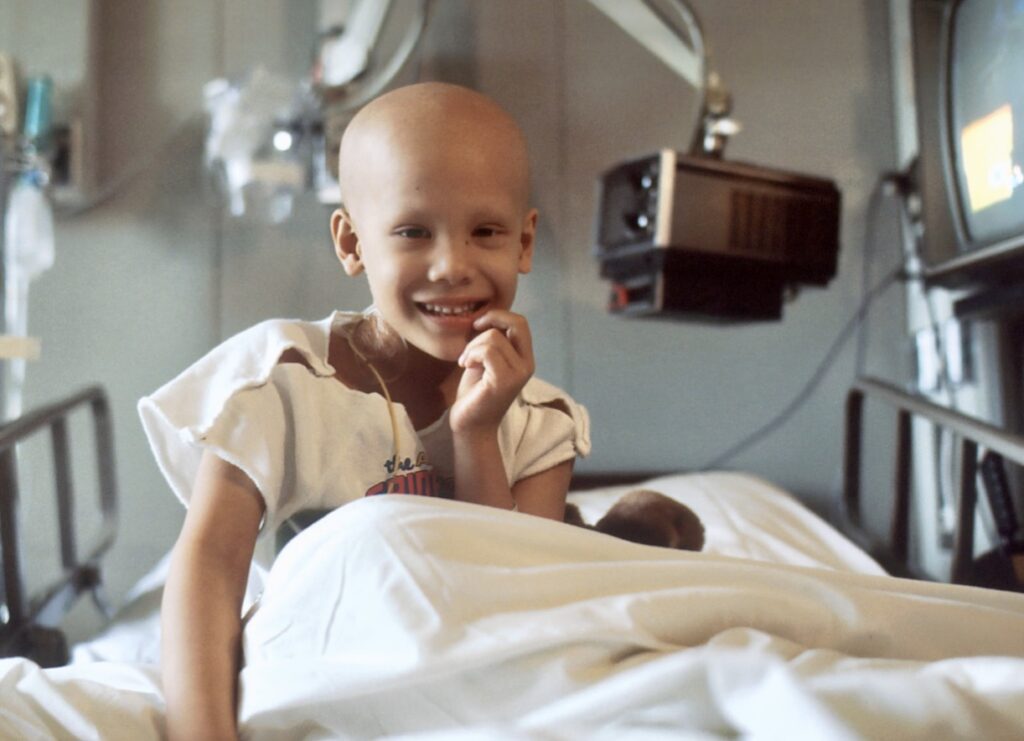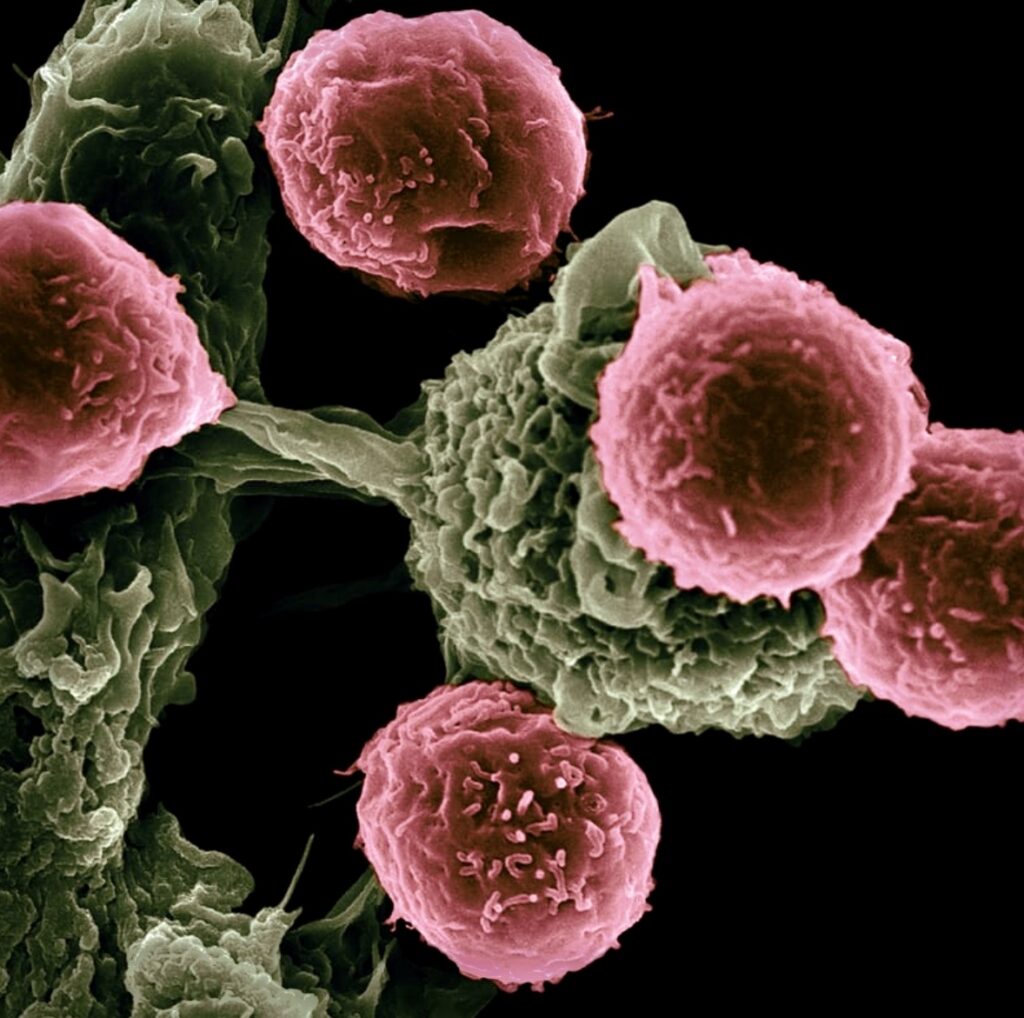Text by Henrylito D. Tacio
Photos: unsplash.com/NCI
The headline says it all: “Cancer cases on the rise.”
A news dispatch, released by the Agence France Presse (AFP), said that while cancer treatment improves and survival rates go up, “so too does the number of people afflicted with the deadly disease.”
“The 14 million new cancer cases worldwide recorded in 2012 will balloon to 24 million within two decades, outstripping the increase in global population,” the AFP report said, quoting the Geneva-based World Health Organization.
In 2015, all forms of cancer combined claimed 8.8 million lives throughout the world. This made cancer the second leading cause of death after heart disease.
“We know how to help avoid it, and to detect it. We’re getting better at treating it. But overall, we’re not making real progress in the fight against cancer,” deplored Christopher Leroux, head of communications for France’s League Against Cancer.
The AFP report cited several reasons why cancer cases throughout the world are increasing. The aging population has been singled out as one cause. The older a person is, the more likely he or she gets the disease. “Cancer risk increases with age,” the report pointed out.
Another reason: unhealthy lifestyle. These include smoking, eating poorly, lack of exercise, drinking alcohol, and obesity.
Then, there’s that risk of being exposed to carcinogenic industrial pollutants (asbestos, to name one) and organic pollutants (dioxin, heavy metals, and small air particles that lodge in the lungs).
In 1998, WHO, in its report, Life in the 21st Century: A Vision for All,” warned: “Cancer will remain one of the leading causes of death worldwide.”

In the Philippines, cancer ranks third in leading causes of morbidity and mortality, based on the statistics compiled by the Department of Health. On the top list are communicable diseases and cardiovascular.
For every 1,000 Filipinos living today, one gets cancer. And the incidence is higher among females than males, according to the Philippine Cancer Society, Inc. (PCSI). Ninety-one percent occur between the ages of 35 and above.
Three-fourths of all cancer cases in the country emerge among those between the ages 60 and above. The leading cancer sites/types are lung, breast, cervix, liver, colon and rectum, prostate, stomach, oral cavity, ovary, and leukemia.
Cancer is not a pleasant experience. Symptoms include loss of appetite, the slow wasting of the body, fatigue, stupor, bleeding, loss of motor functions, dementia, paralysis, or even a state of coma.
“I now understand why Jose Rizal made Noli Me Tangere the title for his novel about the cancer of Filipino society. I know – I have cancer. I can’t bear even the slightest touch for it is so painful,” a cancer patient revealed.
Cancer comes from the Greek word karnikos, which means “the crab.” It is not a modern disease. Some of our apelike ancestors undoubtedly suffered from it, so did the dinosaurs. In fact, says Dr. Robert Weinberg, a molecular biologist at the Massachusetts Institute of Technology, “it is a risk that all multicellular organisms run.”
Each time a human cell divides, it must replicate its DNA, a biochemical manuscript some 3 billion characters long. In the course of transcribing such a lengthy document, even a skilled typist could be expected to make mistakes, and cells, like typists, occasionally err.
More often than not, the mistakes they make are minor and quickly repaired by proteins that serve as miniature mechanics. Occasionally though, cells with defects in their DNA will continue to divide, eventually forming small growths. That’s the time trouble starts.
“The more cell-division cycles an organism undergoes, the more likely it is to accumulate colonies of abnormal cells, each of the offspring of a single progenitor,” wrote “Time” science writer J., Madeleine Nash. “By the time humans reach middle adulthood, then their bodies contain millions of cells that have taken at least one step toward cancer.”
“Cancer may be present in very many ways: as a lump, some change in body function, bleeding, anemia or weight loss – occasionally the first symptoms being from a metastasis,” explains “The New American Desk Encyclopedia.” “Less often tumors produce substances mimicking the action of hormones or producing remote effects such as neuritis.” Neuritis is any disorder of the peripheral nervous system, which interferes with sensation, the nerve control of muscle, or both.
Like taxes and death, cancer is no respecter. It strikes anyone – rich and poor, unknown and famous. Filipino president Corazon Aquino, American actor John Wayne, and Swedish actress Ingrid Bergman all died of cancer.
“People in urban areas have a higher risk of getting cancer,” the PCSI informs. “Whether or not there are fewer cases in rural areas is hard to tell. Generally, cancer cases in remote barrios are not reported.”
In the Philippines, the PCSI says 80% of all cancers can be attributed to environmental influences, particularly those related to lifestyle practices, especially eating. “About one-third of all cancer deaths may be related to what we eat,” it points out.
As such, the PCSI recommends eating a lot of high-fiber foods like fruits, whole grains, and vegetables. “Fiber helps get rid of a lot of toxins and carcinogens from the body because it helps a person digest food and eliminates waste better,” the cancer society explains. Good sources of fiber foods are corn, rice, peas, sweet potato, gabi, kangkong, mangoes, and tomatoes.
Increased intake of vitamins C and A is also recommended. “The best sources are fruits and vegetables, not pills or supplements,” the cancer society urges. Sources of vitamins C and A include dark green and dark yellow fresh vegetables, including carrots, squash, malunggay, alugbati, sili leaves, saluyot. Among fruits, the good sources are oranges, calamansi, guava, and strawberries.
Foods to eat less: those containing fats. Fat is needed to transport vitamins A, C, E and provide acids needed for good nutrition. But it should not exceed 20 percent of the total calories in the diet. “The evidence is growing that eating too much fat may increase your chances of getting cancers of the colon, breast, and prostate,” the PCSI says.
Eating salt-cured, smoke and nitrite-cured foods must also be cut down. “Avoid having frequent servings of smoked bacon, ham, hotdogs, certain cold-cuts, sausages and salt-cured fish,” the PCSI urges. “Think about serving them only on special occasions.”

As for those salty foods, the PCSI reminds, “Taking in too much salt may initiate damage to the lining of the intestines.” Those salt-cured meats and fish are also high in ‘salitre,’ which has nitrates and nitrite. “Excessive salt hastens the conversion of these substances in the stomach, and the formation of nitrosamines, which are cancer-causing.”
Apart from good nutrition, what are the other preventive actions to avoid cancer risks? “Having daily exercise, avoiding smoking, maintaining ideal weight, keeping yourself safe on the job, and having regular physical examinations are helpful,” the PCSI says.
“Cancer is viewed by many as akin to a death sentence,” said Dr. Enrique T. Ona, former health secretary. “But we want to assure the public that when detected and treated in its early stages, the degree of recovery is confidently high.
“Cancer is curable but it needs to be emphasized that prevention is still the key in fighting cancer,” he pointed out. “We must fight this battle on all fronts.”
Now, who’s afraid of cancer?

